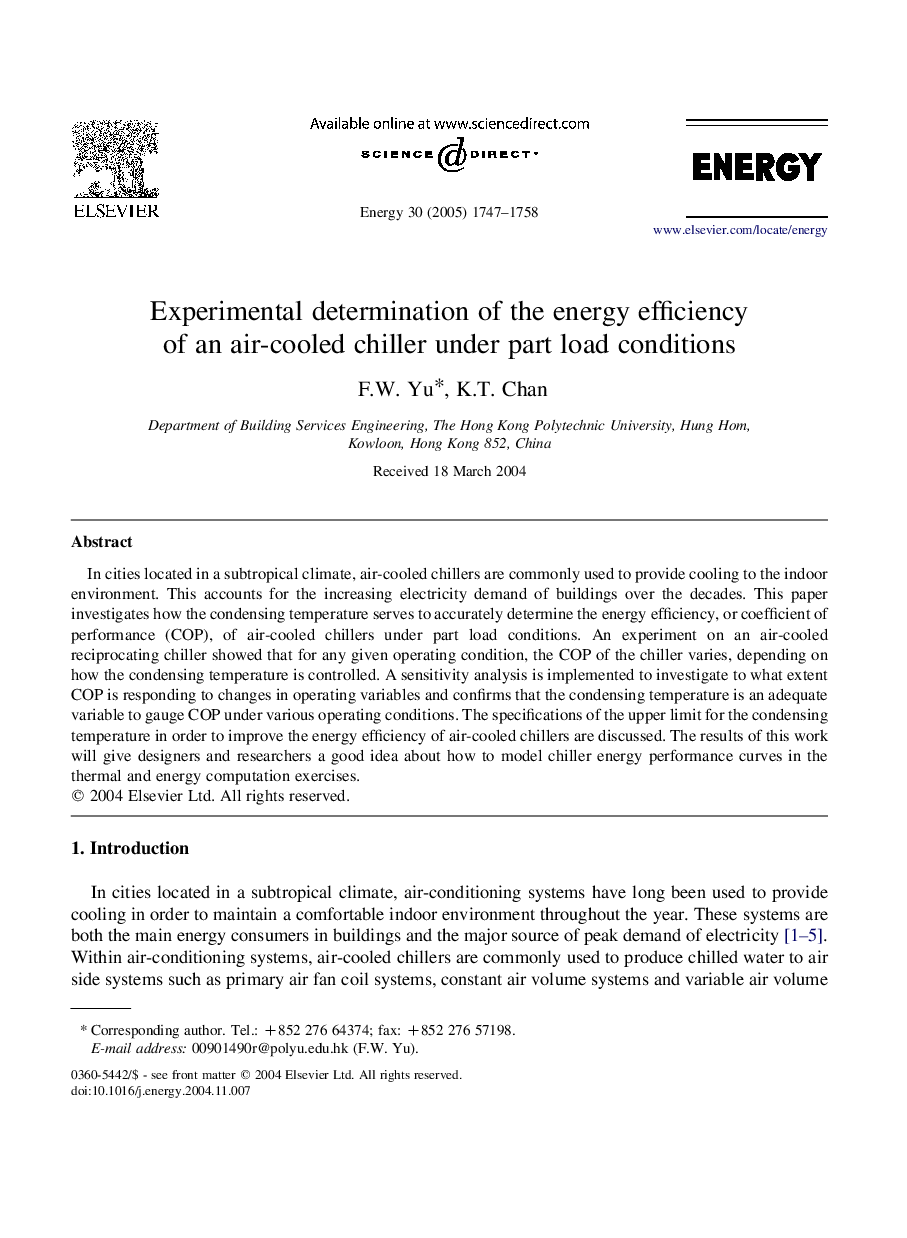| Article ID | Journal | Published Year | Pages | File Type |
|---|---|---|---|---|
| 1736627 | Energy | 2005 | 12 Pages |
In cities located in a subtropical climate, air-cooled chillers are commonly used to provide cooling to the indoor environment. This accounts for the increasing electricity demand of buildings over the decades. This paper investigates how the condensing temperature serves to accurately determine the energy efficiency, or coefficient of performance (COP), of air-cooled chillers under part load conditions. An experiment on an air-cooled reciprocating chiller showed that for any given operating condition, the COP of the chiller varies, depending on how the condensing temperature is controlled. A sensitivity analysis is implemented to investigate to what extent COP is responding to changes in operating variables and confirms that the condensing temperature is an adequate variable to gauge COP under various operating conditions. The specifications of the upper limit for the condensing temperature in order to improve the energy efficiency of air-cooled chillers are discussed. The results of this work will give designers and researchers a good idea about how to model chiller energy performance curves in the thermal and energy computation exercises.
